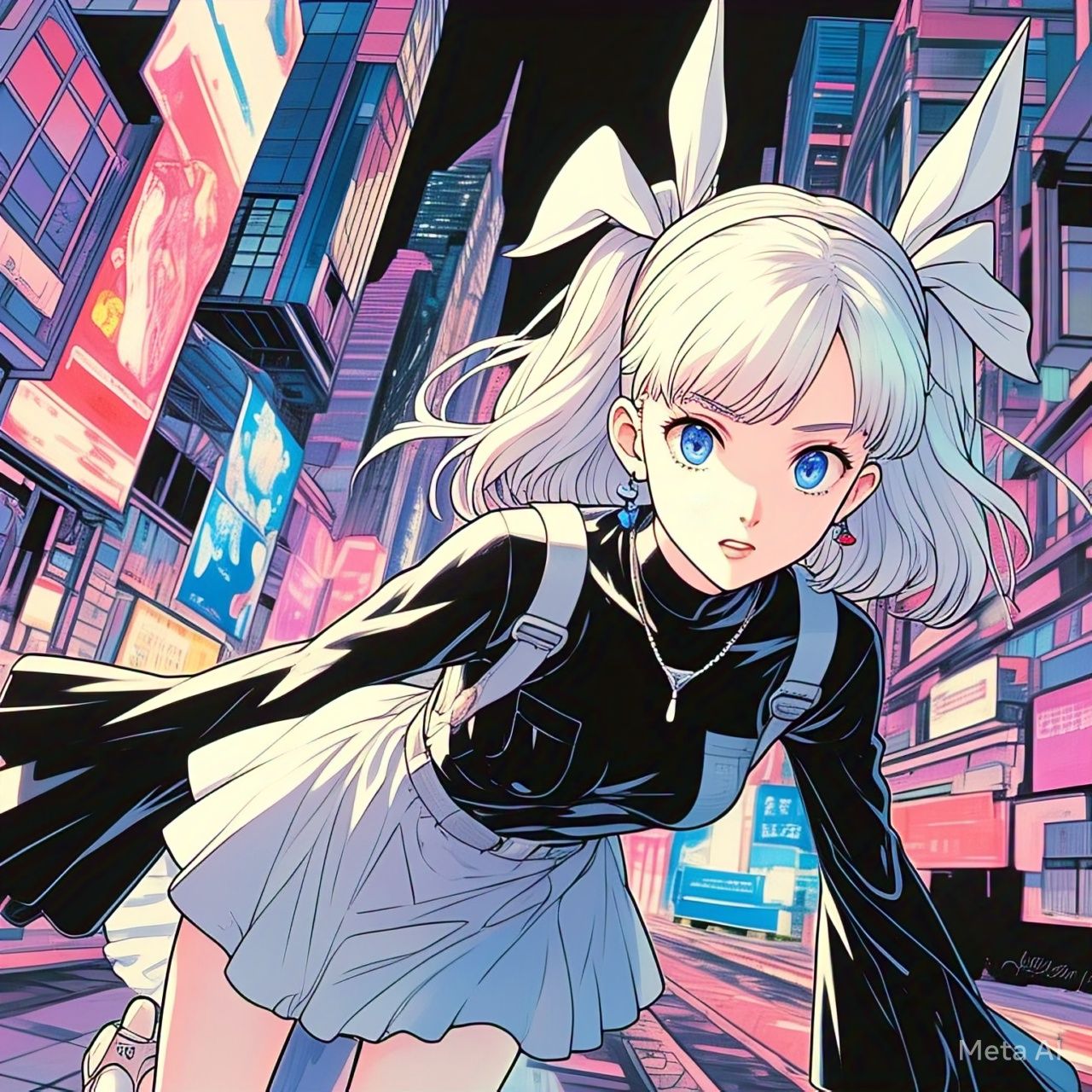The Resurgence of White Hair Accessories in Modern Fashion
A Blast from the Past
Fashion is cyclical, and what was once considered outdated often makes a triumphant return. In recent years, white hair accessories—particularly bows—have re-emerged as a dominant trend in high fashion. From runway shows to street style, these delicate yet statement-making pieces are everywhere. But why now? The answer lies in a blend of nostalgia, minimalism, and the desire for feminine elegance in an increasingly fast-paced world.
White hair bows were a staple in the 1950s and 1960s, symbolizing innocence and sophistication. Icons like Audrey Hepburn and Brigitte Bardot popularized them, making them synonymous with timeless beauty. Decades later, designers are revisiting this trend, reimagining it for a modern audience. The simplicity of white bows contrasts with today’s bold fashion choices, offering a refreshing balance.
The Influence of Celebrity Culture
Celebrities and influencers have played a crucial role in reviving white hair accessories. Stars like Ariana Grande, Lily-Rose Depp, and Zendaya have been spotted wearing oversized white bows, sparking a surge in demand. Social media platforms like Instagram and TikTok have amplified the trend, with users sharing tutorials on how to style them.
High-fashion brands have taken note. Luxury labels such as Simone Rocha, Miu Miu, and Gucci have incorporated white bows into their collections, often pairing them with edgy or avant-garde outfits. This juxtaposition—soft femininity against bold, contemporary designs—creates a striking visual contrast that resonates with today’s fashion-forward crowd.
Why White? The Psychology Behind the Color Choice
White symbolizes purity, simplicity, and freshness—qualities that align with current fashion movements. In a world saturated with maximalist trends, many consumers are gravitating toward cleaner, more understated aesthetics. White hair accessories offer versatility, seamlessly blending with both casual and formal looks.
Additionally, white serves as a blank canvas, allowing wearers to experiment with textures and fabrics. Satin, lace, and tulle bows each convey a different mood—sleek and modern, vintage-inspired, or whimsically romantic. This adaptability ensures that the trend remains accessible to a wide audience.
The Future of White Hair Accessories
As fashion continues to evolve, white bows and other hair accessories show no signs of fading. Designers are experimenting with oversized designs, asymmetrical placements, and mixed materials to keep the trend fresh. Whether worn as a subtle accent or a bold statement piece, white hair accessories are reclaiming their place in the fashion world.
The resurgence of this trend speaks to a larger cultural shift—one that embraces nostalgia while redefining it for a new generation. As more people seek ways to express individuality through fashion, the white bow stands as a symbol of both classic elegance and modern reinvention.
The Art of Styling White Hair Bows for Every Occasion
From Runway to Reality: Making White Bows Work for You
While white hair bows have made a splash on high-fashion runways, incorporating them into everyday wear requires a thoughtful approach. The key lies in balancing the accessory with the rest of the outfit to avoid an overly costumed look. For a casual daytime ensemble, a small satin bow paired with loose waves creates an effortlessly chic vibe.
For formal events, an oversized bow can add drama without overwhelming the outfit. Designers suggest pairing structured bows with sleek updos or minimalist outfits to let the accessory shine. The contrast between a sharp blazer and a delicate bow, for example, strikes the perfect balance between power and femininity.
Hair Texture and Bow Placement
Not all bows work with every hair type, and placement is crucial. Those with fine hair may opt for smaller, clip-in bows to avoid weighing down their strands, while individuals with thick or curly hair can experiment with larger, more voluminous styles.
Placement also affects the overall aesthetic. A bow positioned at the crown of the head evokes a classic, retro feel, while a low side-swept bow feels more modern and relaxed. Braids and ponytails offer additional styling opportunities, allowing the bow to serve as a focal point or a subtle accent.
Mixing and Matching with Other Trends
White bows don’t exist in a vacuum—they can be layered with other trends for a personalized touch. For instance, pairing a bow with pearl hair clips or minimalist barrettes creates a cohesive, elegant look. Alternatively, combining a bow with edgier elements like leather jackets or chunky boots adds an unexpected twist.
The rise of “coquette” aesthetics—a style that blends romance with playful innocence—has further cemented the white bow’s place in fashion. Layering bows with lace, ruffles, and soft pastels enhances this dreamy, feminine vibe.
DIY and Customization: Making the Trend Your Own
For those who prefer a hands-on approach, crafting custom bows is a growing trend. DIY tutorials abound, teaching fashion enthusiasts how to create bows from ribbons, vintage fabrics, or even repurposed clothing. Customization allows for unique textures, sizes, and embellishments, ensuring that no two bows are exactly alike.
This personal touch aligns with the broader movement toward sustainable fashion. By upcycling materials or investing in handmade pieces, wearers can participate in the trend while minimizing environmental impact.
The Historical Significance of White Hair Accessories in Fashion
From Royalty to Runway: A Timeless Symbol of Elegance
White hair accessories, particularly bows, have a storied history that spans centuries. In the courts of 18th-century Europe, elaborate white ribbons and bows adorned the hairstyles of noblewomen, signaling wealth and refinement. Marie Antoinette, known for her extravagant beauty rituals, often wore towering updos decorated with lace and silk bows, setting a precedent for aristocratic fashion.
By the Victorian era, white bows became a marker of modesty and femininity. Women of high society used them to accentuate their hairstyles while adhering to strict social codes. The delicate nature of white fabric—often paired with pearls or cameos—reinforced ideals of purity and grace. Even as fashion evolved, the white bow remained a subtle yet powerful statement.
The Golden Age of Hollywood: Glamour and Iconic Style
The 20th century saw white hair accessories transition from aristocratic luxury to mainstream appeal. Silent film stars like Mary Pickford and Clara Bow popularized girlish, bow-adorned hairstyles, blending innocence with burgeoning Hollywood glamour. By the 1950s, screen sirens such as Marilyn Monroe and Grace Kelly embraced white bows as part of their signature looks, often pairing them with glamorous waves or sleek chignons.
Audrey Hepburn’s iconic look in Breakfast at Tiffany’s (1961) cemented the white bow’s place in fashion history. Her character, Holly Golightly, wore a simple yet striking bow in her updo, reinforcing the idea that understated elegance could be just as impactful as bold fashion choices. This era solidified the white bow as a timeless accessory, one that transcended fleeting trends.
The Punk Rebellion and the Subversion of Tradition
In the 1970s and 1980s, fashion took a rebellious turn, and hair accessories were no exception. The punk movement, known for its defiance of conventional beauty standards, repurposed the white bow in unexpected ways. Designers like Vivienne Westwood incorporated oversized, deconstructed bows into edgy hairstyles, juxtaposing innocence with anarchic style.
This era proved that white bows were not just for demure, polished looks—they could be twisted, torn, or exaggerated to make a statement. The contrast between the bow’s traditional connotations and its punk reinvention demonstrated its versatility, ensuring its survival in ever-changing fashion landscapes.
Cultural and Symbolic Meanings Across the World
Beyond Western fashion, white hair accessories hold significance in various cultures. In Japanese traditional dress, white ribbons and bows are often used in Shinto weddings, symbolizing purity and new beginnings. In some African cultures, elaborate headwraps and adornments incorporate white fabrics as part of ceremonial attire.
This global perspective highlights how a seemingly simple accessory can carry deep cultural weight. As fashion becomes increasingly inclusive, designers are drawing inspiration from these diverse traditions, blending them with contemporary trends to create something entirely new.
The White Bow’s Enduring Legacy
What makes the white bow so enduring? Its ability to adapt while retaining its core symbolism is key. Whether as a nod to vintage glamour, a punk statement, or a modern minimalist accent, the white bow continues to evolve without losing its essence.
As fashion historians and designers revisit past trends, the white bow remains a recurring motif—one that bridges generations and styles. Its resurgence in high fashion today is not just a fleeting trend but a testament to its timeless appeal.
The Future of White Hair Accessories – Innovation & Sustainability
High-Tech Hair: The Next Generation of Wearable Fashion
As fashion intersects with technology, hair accessories are undergoing a futuristic transformation. Designers are experimenting with smart fabrics—white bows embedded with LED lights, temperature-sensitive materials, or even micro-sensors that react to movement. Imagine a bow that subtly changes shade under sunlight or pulses gently in sync with music at a party.
Tech-infused brands like Anrealage and Iris van Herpen have already showcased luminous and morphing textiles in their collections. It’s only a matter of time before these innovations trickle down to everyday hair accessories, merging tradition with cutting-edge design.
Sustainable Style: Eco-Friendly Bows for the Conscious Consumer
With growing awareness of fast fashion’s environmental impact, consumers are demanding sustainable alternatives. White bows, often made from satin or polyester, are being reimagined using organic cotton, recycled silk, and plant-based dyes. Brands like Reformation and Stella McCartney lead the charge, proving that elegance doesn’t have to come at the planet’s expense.
Upcycling is also gaining traction. Vintage scarves, repurposed wedding dresses, and even biodegradable materials like mushroom leather (mycelium) are being crafted into bows. This shift reflects a broader movement toward circular fashion, where accessories are designed to be reused, recycled, or composted.
Digital Fashion & Virtual Influencers: Bows Beyond Reality
The rise of the metaverse and digital fashion has opened new avenues for hair accessories. Virtual influencers like Lil Miquela and Noonoouri sport hyper-stylized white bows in CGI-rendered campaigns, blurring the line between physical and digital trends.
Luxury brands are capitalizing on this by selling NFT accessories—limited-edition virtual bows that users can “wear” in online spaces. While some may dismiss this as a gimmick, the influence of digital aesthetics on real-world fashion is undeniable. Soon, we might see augmented reality (AR) filters that let users “try on” different bow styles before purchasing.
Gender Fluidity & The Evolving Meaning of White Bows
Historically associated with femininity, white bows are now being reclaimed in gender-neutral and avant-garde fashion. Designers like Harris Reed and Palomo Spain incorporate oversized bows into menswear, challenging traditional norms.
Celebrities like Harry Styles and Billy Porter have embraced the trend, proving that hair accessories are no longer confined by gender. This shift aligns with a cultural push toward self-expression beyond binaries, making the white bow a symbol of inclusivity rather than conformity.
Conclusion: A Timeless Trend with a Modern Twist
From its aristocratic roots to its digital future, the white hair bow has proven its staying power. Its adaptability—whether through sustainable reinventions, tech integrations, or cultural redefinitions—ensures it remains relevant in an ever-changing fashion landscape.
As we move forward, one thing is certain: the white bow is more than just an accessory. It’s a blank canvas for creativity, a bridge between past and future, and a testament to fashion’s endless capacity for reinvention. Whether worn in real life or virtual spaces, its elegance and versatility will continue to captivate generations to come.










